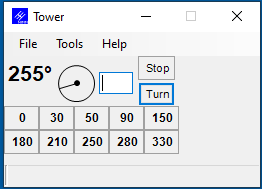

With N1MM working wonderfully, I made about 70 contacts in the BARTG RTTY contest.

I have a very small station but at the end of the day, I have fun with what I have so I guess, that's all that matters. I dream every time I open my QST or CQ magazine but my equipment is a direct reflection of what I can afford, just as it is for many others. There are times when I wish I was a testing ground for new Icom radios and Ameritron amplifiers (I dare the other manufacturers to make me switch). My station is getting old and tired and my equipment is letting me know that.
#N1mm logger automatic turn down power lever digital modes software#
Another dive into upgrading software and I only wish equipment was as easy. Now that makes for much better contesting! I am a bit slow getting around to upgrading software and getting with the times but I am normally glad when I finally take the plunge. I went a step further and set up rig control with N1MM as well. Seems the EXTFSK is an add on that when used, it allows software control of FSK and PTT for the MMTTY engine. So, I downloaded it and after some tweaking and setting adjustments, I was sending mark & space just like before. My close friend Sean, KL1SF mentioned he had to use EXTFSK to get his working. I used the same settings with nothing but a dead carrier when attempting to send RTTY. With that in mind, I decided to see what I could do with the latest version of N1MM Logger.Īs mentioned, I have run N1MM Logger for a long time but when I went to use the latest version, I could not get it to work with my Icom 756PRO. Now that I have transitioned over to using Win-test, I have found a few contests not yet supported by their software. I had an older version of N1MM logger that I exclusively used for RTTY contests. The bands left a bit to be desired but with the help of Sean, KL1SF and his suggestion using EXTFSK, I was able to get the latest version of N1MM Logger working. Set points further apart will result in a wider temperature range and use less energy.This weekend was another teaser for summer as there was lots of sunshine. Similarly, if adjusting the cooling set point below 68☏, the heating set point will also decrease to prevent the temperatures from overlapping.Ĭloser heating and cooling settings will maintain tighter temperature control and use more energy. Using this example, if the heating set point is adjusted above 76☏, the cooling set point will also increase to prevent the temperatures from overlapping. Your Sensi thermostat will always maintain a minimum separation of two degrees between the heat and cool set points to prevent heating and cooling from running at the same time. If the indoor temperature is between 70☏ and 78☏, no heat or cool will run. Cooling will come on if the room temperature rises to the cool setting of 78☏.

With these settings, the heat will come on to maintain a minimum of 70☏ if the room temperature drops to the heat setting. Use the “Up” and “Down” arrows to change the highlighted set point.įor example, in Auto Mode, you can select a heating temperature and a cooling temperature such as The set point selected will be highlighted white. Heating and cooling set points can be changed by tapping the set point you would like to adjust. The bottom set point is the heating temperature. The top set point is the cooling temperature. When Auto Mode is selected two set points will appear on the main screen of the Sensi app. Select “Auto” to allow the thermostat to switch between heating and cooling based on room temperature and the selected heating and cooling set points. Auto Mode can only be enabled from the Sensi app.įrom the main screen of the app, tap the Mode icon in the lower left corner. Sensi thermostat has a feature called Auto Mode, which allows the thermostat to switch from Heat to Cool, or Cool to Heat automatically. Operation What is Auto Mode, and how do I use it?


 0 kommentar(er)
0 kommentar(er)
